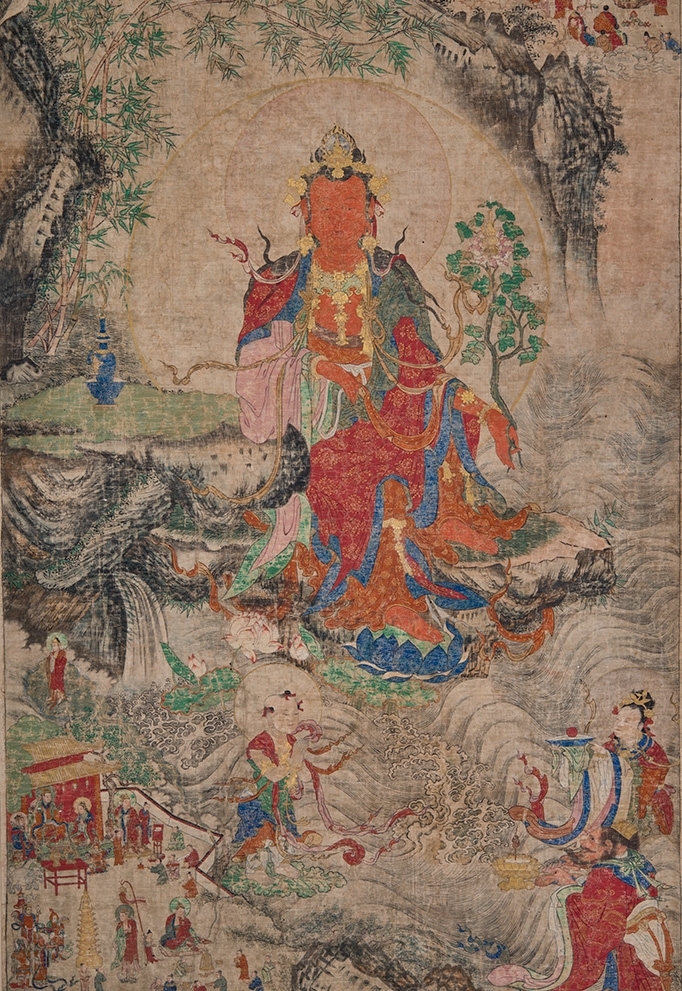
This painting is an unusual pastiche of Tibetan and Chinese imagery and painting techniques. The central figure, the bodhisattva and future Buddha Maitreya, is marked by his traditional Tibetan Buddhist iconographic attributes: he is red, has a stupa in his crown, and holds a blossoming branch with a vase on top. However, he is seated in a watery grotto and bamboo backdrop closely associated with Chinese paintings of the bodhisattva Avalokiteshvara, complete with a white parrot on the rocks to his right and the childlike pilgrim Sudhana below him. Despite these misleading background elements, the main figure can nonetheless be identified as Maitreya through the surrounding narrative scenes. The scene in the upper-right corner depicts the story of the sage Kashyapa passing on a robe to Maitreya, symbolic of the transmission of the Buddha’s teachings.
The background reflects that the artists had a good grasp of Chinese landscape painting, with layers of ink and specialized brush techniques. Moreover a number of the figures, follow Chinese conventions of hair and dress. However, color notations in Tibetan script visible under the pigment layers found all over the composition, added by the master-artist to indicate how the composition should be painted by the artists working under him, suggest the hands of Tibetan artists at work.
57 1/2 x 31 in.
C2006.66.34, HAR1111
- https://dev.rubinmuseum.org/images/content/771/c2006.66.34har1111__zoom.jpg
- https://dev.rubinmuseum.org/images/content/771/c2006.66.34har1111__zoom.jpg

